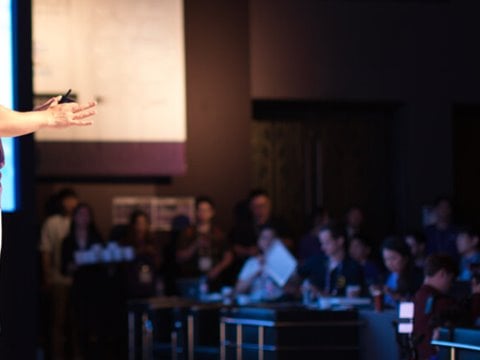Transforming the way we work
Digitalisation allows us to take big leaps not only in technology, but also in the way we work. The key word is ecosystem. We at Kalmar see digital ecosystem as a collaboration platform for the entire product lifecycle in cargo handling.
What makes the ecosystem digital? It is not just that people exchange information online supported by digital tools, but also that more and more devices and systems exchange data to make it possible to sophisticatedly automate equipment at ports. Simultaneously, devices gather data that can be analysed and utilised to the advantage of the terminal operators. Machines used to be standalone units, but now they are connected to many layers of the entire supply chain. We at Kalmar are at the forefront in developing innovative services and solutions to ports and terminals. But how would we shape the business if fresh eyes and minds were to tap into our systems?
In the era of digitalisation, companies are increasingly teaming up to collaborate with outside experts. Kalmar’s first hackathon “CargoHack” at our Technology and Competence Centre in Tampere, Finland on 8-10 April 2016 was our way of contributing to the development of our industry. The event brought together upcoming, brilliant and agile tech minds that were supported by Kalmar experts. The goal was to delve into solving some of the most challenging issues that terminals are facing today.
At CargoHack, the teams were asked to “digitalise the terminal”. We devised a number of tasks to this end, covering areas like visualisation of terminal operations, use of mobile technologies, safety, and improving efficiency of the wider value chain around cargo handling.
The world keeps on turning
How will the container industry look like in a decade or two from now? Will shipping containers be obsolete, as digitalisation gains ground and disruptive manufacturing technologies such as 3D printing take hold?
When discussing digitalisation, people always talk about disappearing industries. In many cases work isn’t necessarily disappearing, it is just changing shape. Digitalisation isn’t really something we can opt out of. But no matter what happens, people will still need reliable machines to move physical goods around the globe in 20-ton boxes. Whether the next economic superpower is China, India or Africa, global trade patterns will still exist. Machines will exist too; it’s the layer above them that will grow.
The production and sharing of resources is a basic feature of our world. However, as the utilisation of machines and terminals becomes a commodity, the true value for both terminal operators and equipment providers will be found in how to monitor and manage a supply chain in which information is transmitted and shared in real time between all relevant parties.
Collaborating in the cloud
Cloud-based collaboration already exists in other industries, so of course it will make its way into the logistics chain. Why would you want to enter the same information ten times? Cloud-based platforms allow information to be shared while still addressing needs for non-stop data access, ownership and security. This is certainly not a new discussion, but it’s something the container world is still working on.
Increasing focus on digital innovation isn’t just about making the most of new technologies – it’s about changing our culture and working practices, and changing the way we co-create with our customers and partners. We believe that open innovation and co-creation generate novel ideas and out-of-the box thinking that can help the entire value chain around terminal operations on the road to automation and increased efficiency.
Digitalisation is already part of our regular life. But what if all the solutions we use every day at home or at work would become available for our logistics chain and the container shipping industry? That is the future, right there.
Related articles
Further reading
Subscribe and receive updates in your email
Subscribe













